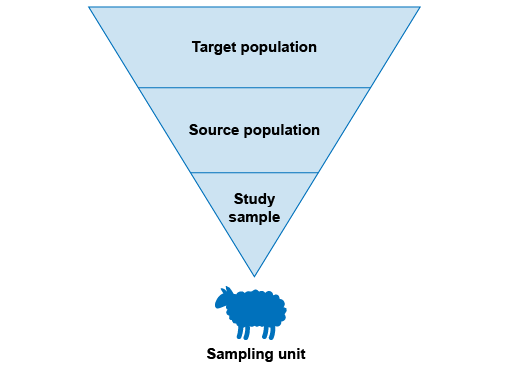1.2 Sampling terminology
How can we determine what constitutes an ‘appropriate’ sample? It is helpful to introduce some terminology as we go through the steps in selecting a sample.

First, we need to identify the population in which we are interested – this is known as the ‘
Activity 2: Understanding sampling
Can you think of a livestock target population you are familiar with or interested in? (If not, try this example: fish farms around the coast of an island country.)
Use the space below to answer the following questions:
- Can you identify the target population?
- Now think about the source population you might select. Can you imagine a possible study sample for this source population?
- Finally, note the possible sampling unit.
Discussion
How did you do with this activity?
If you chose to use the example provided, your target population might have been all the fish farms in the island country. Your source population could be farms in three bays around the island, and the sample could be 500 fish from five farms in each bay. Individual sampling units could be individual fish, but you might have chosen pooled sampling units such as sediment collected from the bottom of the ponds – this is because bacteria can also be isolated from these environmental samples, and are therefore likely to be present in all the fish in that environment.
1.1 Why do we need to sample?



